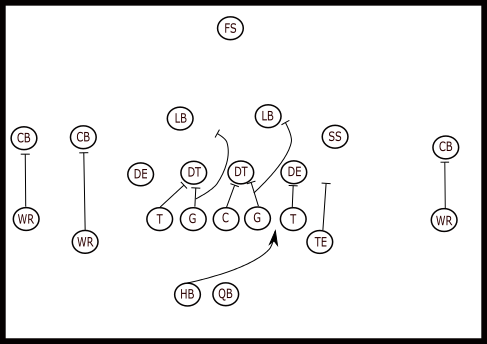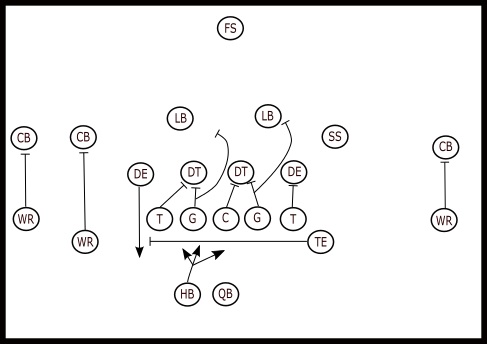
If you’ve read my recaps, you know Virginia Tech’s blocking scheme is amorphous and deceptive. One of the biggest features of the running game is that it thrives on plays that all look the same in terms of blocking, but go all over the map with the football.
A good example is how Tech’s zone-blocking scheme is tweaked, and particularly how they’ve morphed two traditional zone-style run plays, the inside zone and the split zone. On the inside zone, the line moves in unison in one direction, and the running back follows them looking for a crease to sneak through.

On the split zone, a pulling tight end or H-back creates running lanes in the middle of the formation by hitting the backside defensive end with a kick-out block.

Zone plays require the back to run at an angle, and to read and stretch defenses to varying degrees looking for a weak spot in a general area of the defense. The split zone, for example, might create as many as three different holes for a tailback. Because there are so many potential holes, defenses have to both attack the direction the line is blocking towards while also being alert for openings appearing in the line. This is in contrast to gap runs, which usually work by opening up a single hole in the defense for the runner.
...Subscribe to read full story
Tired of low effort articles and clickbait? So are we. Subscribe to read great articles written by a full-time staff with decades of experience.
Already a subscriber? Login Here



